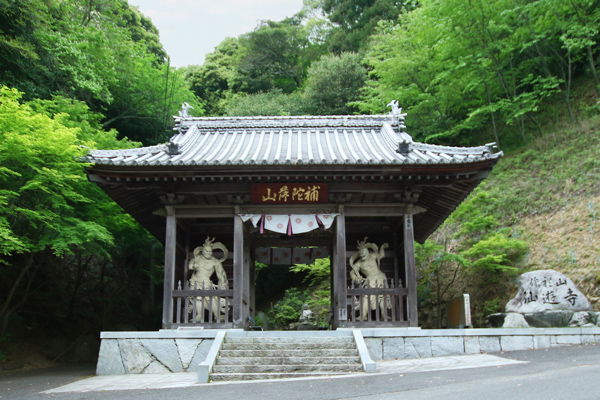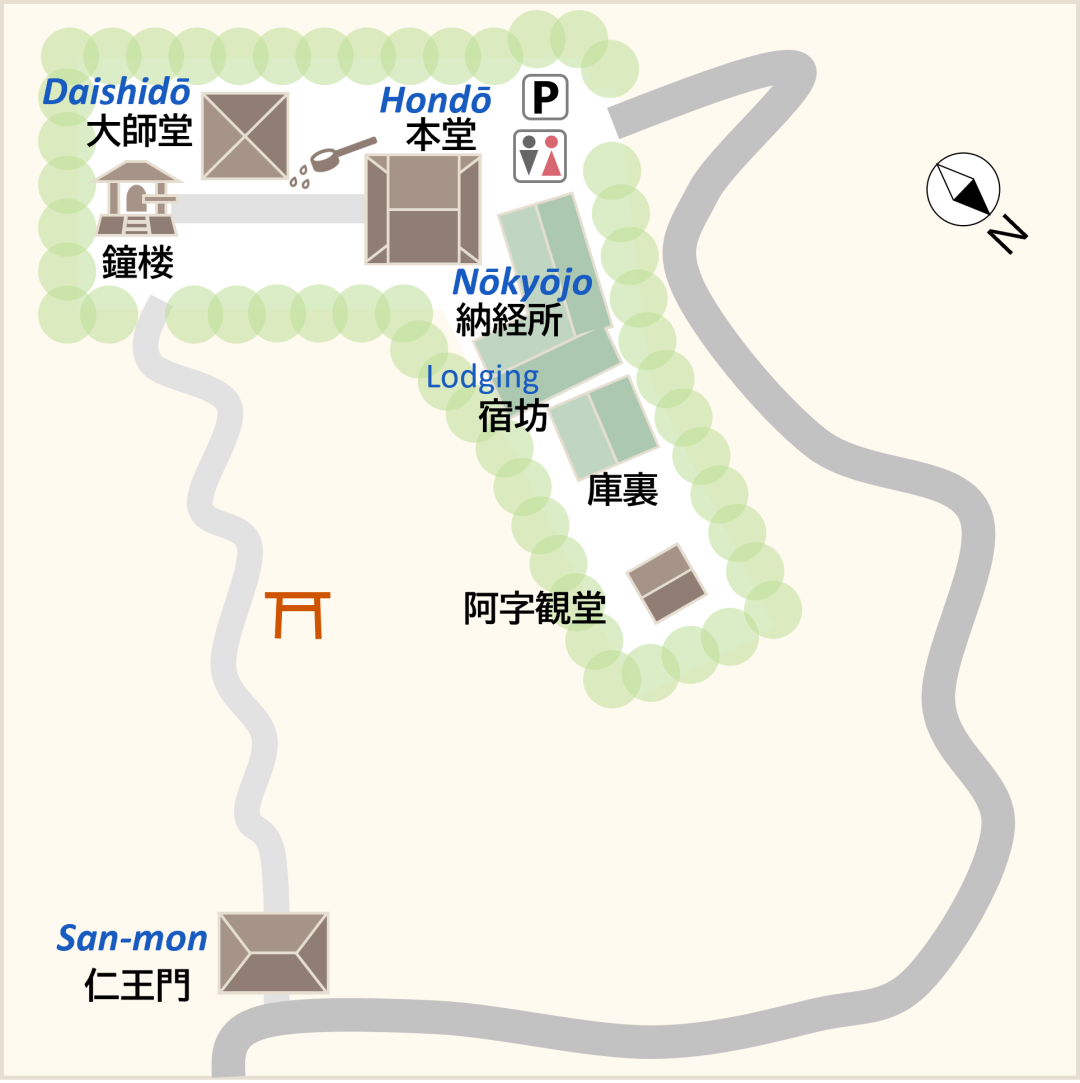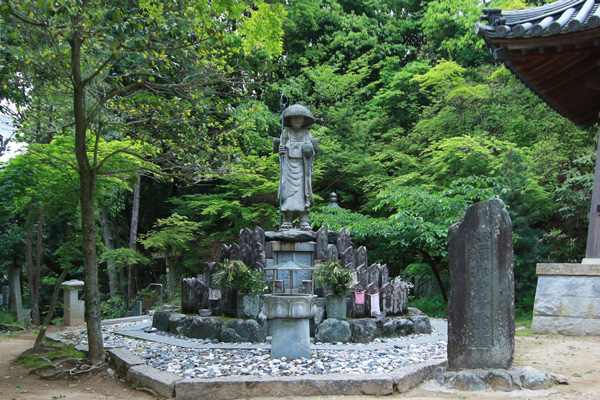The Shikoku Pilgrimage Temple Guide
Temple 58, Senyūji

Precinct map

History of the temple
The temple grounds are located on a plateau 300 meters above sea level, near the summit of Mt. Sareizan. You can see the towns of Imabari and the Imabari Kokusai Hotel, the tallest hotel in Shikoku, below you. In the distance, you can see the Shimanami Kaido, a long road built in 1999 that connects Shikoku to Japan’s main island of Honshu by way of smaller islands in the Inland Sea.
According to legend, the temple was built by Ochi no Morioki, lord of Iyo (Ehime), by order of Emperor Tenji (reigned 668-671). The principal image of Senju Kannon (Thousand-armed Bodhisattva Who Hears the Sounds of the World) used to belong to the Emperor. It is said that a female dragon came up from the sea, carved the statue, and enshrined it in the temple. The mountain name (temples are metaphorically called mountains) of the temple comes from this legend, though there is also a legend that the statue was delivered from the dragon palace under the sea.
There is another a legend. A monk named Abo Sennin stayed at Senyūji for 40 years and built seven major temple buildings, but in 718 he disappeared without a trace. The name of the temple is derived from this Abo Sennin.
Kobo Daishi performed Buddhist rituals at Senyūji when he founded the Shikoku Pilgrimage. He dug a well to help people suffering from illnesses, and restored the seven major temple buildings, which had fallen into disrepair. The well remains by the side of the old approach to the temple and is said to have saved many people from various illnesses. It is known as the Well of Blessings and is revered by many.
During the Edo period (1603-1868), the temple fell into disrepair, with only the Hondo and 12 Gongen remaining. In the early Meiji era (1868-1912), Yuren Shonin became the head priest of the temple and worked with many supporters to rebuild the temple. In 1871, Yuren Shonin became the last person in Japan to be enshrined as a sokushin jobutsu (Living Enlightenment, the dried or mummified body of a monk in meditation posture). There is a five-ringed pagoda in the precincts of the temple.
Highlights
Sand-stepping
The principal images of the 88 temples of Shikoku are enshrined here with Shugyo Daishi (Kobo Daishi walking the Shikoku Pilgrimage) at the center, and stone tablets filled with sand from each temple are placed on the ground. If you visit the temple with all your heart and soul, you will be blessed.
Shukubo (temple lodging)
The Shukubo is set up so that pilgrims can relax and continue their journey. Please spend a quiet night in the mountain where Kobo Daishi used to stay. (All rooms are Japanese-style, reservations required.)

Details
Names: Sareizan, Senkōin, Senyūji
Denomination: Koyasan Shingon Sect
Principal Image: Senju Kannon Bosatsu
Founder: Ochi Morioki
Founded: Late 7th century
Access
Address:483, Bessho-ko, Tamagawa-cho, Imabari City, Ehime 794-0113
Phone: 0898-55-2141
Parking: 400 yen for cars as a road maintenance fee
Lodging: Available (50 people, reservation required)
Official website:http://www.shikoku88-58senyuji.com/
X: @kouken_oyamada
